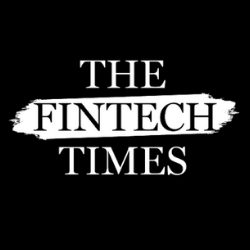In the last 60 years, we have seen the payments industry make one giant leap after the other: from chip and PIN, to contactless, to biometric payments, the industry has continued to evolve. The banking industry has not shared the same fate. With many still using technology that dates back to the introduction of electronic payments, banks simply cannot keep up with customer demand.
Consumers expect everything instantly: from buying something online and getting next day if not same-day delivery, to instantly playing a new song on their phones the minute it’s released. This demand has now seeped into banking, as customers expect instant payments and real-time processing.
But how can banks do this when they use such outdated technology? Matt Phillips, VP, Head of Financial Services UK and Ireland, Diebold Nixdorf, a company looking to digitise and automate the way people bank and shop, explains how banks shouldn’t view digitisation and the development of fintechs as competitors, but as an opportunity to catch up through partnerships:

The past 40 years have seen a dramatic acceleration in payments, whether it is the mode of payment or the technology that sits behind this. In the late 1970s, the magnetic stripe was introduced on credit cards and everyday electronic payments were born. It took 20 years for the industry to move forward to a more secure system of chips in cards, meanwhile, PayPal was already driving peer to peer payments and revolutionising the use of internet banking. In the 20 years since, we have cycled through contactless payments, mobile payments, wearable payments and even biometric payments, with Amazon adopting ‘palm payments’ in its physical stores as its latest innovation.
During this time, traditional banks and the legacy technology they use have been under increasing pressure to adopt the next technologies and offer customers the smoothest payments journey. Customers expect instant payments and real-time processing, but many banks still have active technology which dates back to the introduction of electronic payments.
How can banks ensure service keeps up?
Ultimately, in the competitive payments landscape, banks must ensure that customer choice is at the heart of their offering. But with technological innovation and consumer trends evolving at such a rapid rate, this is hard to deliver, particularly when these institutions are working with outdated infrastructures and systems. Banks are simply unable to operate as nimbly as required. They require both financial investment and a strong operational focus towards the new technology that needs to be adopted.
The introduction of Open Banking has left many banks without a choice – it’s a sink or swim situation as to whether they adapt or just get left behind. Startups in the payment space operating on a SaaS model are increasingly taking advantage of the integration that enables them to compete in the payments industry through Open APIs, and new services on offer have shined a light on those banks which have stood still and not changed their offering over the past decade.
However, the emergence of new players and platforms does not necessarily come at the detriment of banks. Partnerships and collaboration are key to how these establishments embrace the future of payments and evolve to meet the demands of their customers. By outsourcing payments technology, they will be able to keep pace with industry evolution – but they must make sure they pick the right strategic partner so they can focus on their legacy infrastructure and guarantee their existing systems are maintained while new technologies are plugged in.
Fintech innovation
Banks can also work with fintech partners in a way that enables their current technology infrastructure to be built on and fed into. While legacy systems may – to a certain degree -have a ceiling in terms of how future-proof they can be, the majority will have significant space to improve what they are currently working with. Leaning on the expertise of a specialist fintech provider means they can keep pace with current industry standards and developments if they aren’t naturally a leader who can really move the needle when it comes to next-level technology.
Having said this, the right fintech partner for any bank should go beyond this and open up broad and ambitious possibilities. For example, payment providers can help banks revolutionise technology more widely across their services through new payment methods, such as voice-activated payments – which have become a recent addition to the payment mix. Banks are increasingly recognising that external partners can provide infrastructure networks that will improve their business models and help accelerate change, and this is really a crucial factor in keeping up with customer demands.
As banks step back and survey the situation they currently face, there should be many reasons for optimism and ambition rather than uncertainty around how they can keep pace with their fintech rivals. It takes openness, collaboration and the willingness to integrate with providers in the payments space – but the main challenge will be the due diligence and strategic thinking required to make sure their network expands to the right places. We are already seeing signs of friction and disagreement in places, for example, a number of new ‘buy now, pay later’ integrations, and this is a prime example of why the industry must have its ears to the ground on what consumers like and want in their banking mix.
As we are witnessing across the banking world and the range of services that span further than payments, keeping pace with technological evolution will be at the top of the agenda for all, and this isn’t a trend that’s changing any time soon. Those who get it right will be like a magnet when it comes to customers looking at which provider can meet their needs for a modern banking experience and payment solutions that are accessible, flexible and efficient.



